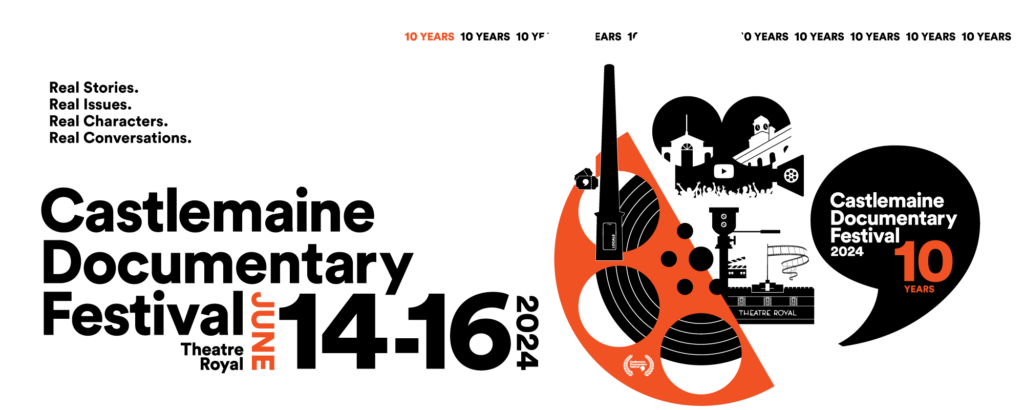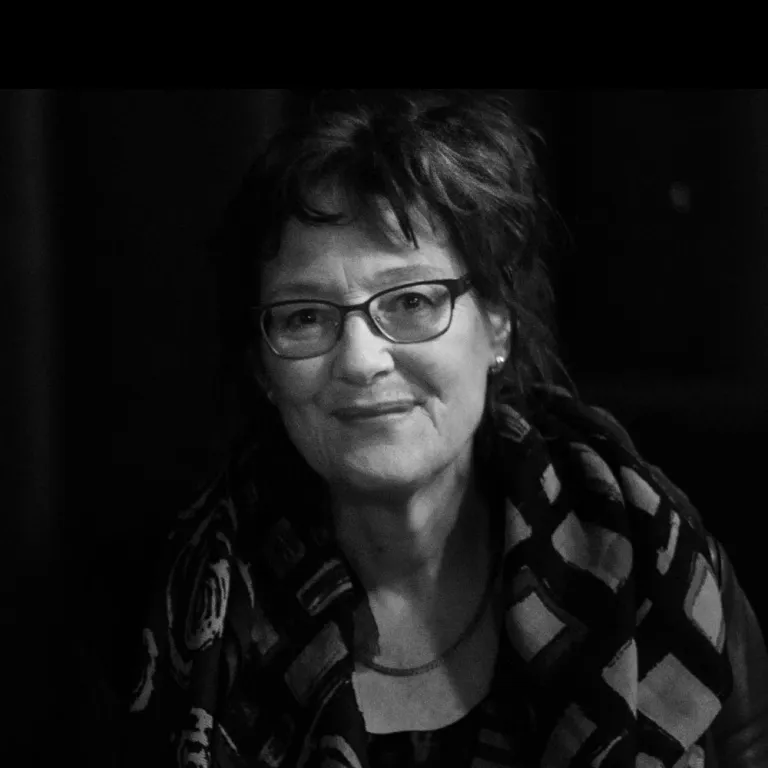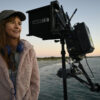An hour and a bit out of Melbourne sits Castlemaine, a bustling cultural hub where jazz festivals, arts experiences, and the esteemed Castlemaine Documentary Festival (affectionately known as C-Doc) lives. C-Doc is now in its tenth year, with its 2024 festival running in the Theatre Royal from 14 to 16 June, alongside an array of films and games in the intimate setting of The Yurt.
The theme for the 2024 festival is Locals, and it’s within that theme that real stories, real issues, real characters, and real conversations spring forth. This exploration of ‘real stories’ through the art of documentary filmmaking commences on Friday 14 June in the Yurt with two stories from Castlemaine: a beautiful moment by Michael Harkin and Ag Fab: From Paddock to Catwalk by Karen McMullan. Poet and artist Jazz Money will be in attendance as a guest of the festival with her film WINHANGANHA, which opens the screenings in the Theatre Royal on Friday evening.
Across the weekend, there is an array of stories that span from the cautionary, yet no less charming, tale of an elderly man who falls victim to a cruel scam in Starring Jerry as Himself, to the World Premiere of the environmental documentary The Koalas. Castlemaine audiences also get to experience some of the most visually striking documentaries of the year with The Road to Patagonia, and two films which push the format of documentaries to its limits with The Gullspång Miracle and Apolonia, Apolonia.
I caught up with Festival Director Claire Jager to discuss C-Doc and to get my own personal tour through the festival. In the following interview, Claire talks about the joy of discovering new stories on film, and the importance of allowing audiences the time to breathe between screenings and to experience to unpack what they’ve just watched with their fellow audience members.
The Castlemaine Documentary Festival launches on 14 June and tickets are available right now through CDocFF.com.au.

How does it feel to be able to celebrate the ten-year anniversary of C-Doc?
Claire Jager: I’ve been with the festival for five years now; I came in at the end of 2019 and we hit COVID, so it doesn’t really feel like I’ve done it for five years. We have certainly built it up and consolidated it, and it’s now such a fixture in the mid-winter of Castlemaine. It can be so cold, but inside the Theatre Royal is always warm and cosy for the audience. Then we’ve got the alternative micro-viewing experience, The Yurt. It’s more family friendly, kids can lounge on beanbags and it’s also warm and cosy.
We don’t overlap the programme and I think that’s really important. C-Doc is a cumulative experience.
That’s so important as an audience member to be able to feel like you’re not missing out on anything during the festival, so much so that people can see everything in the Theatre Royal if they choose. How important is that for C-Doc when it comes to programming the festival?
CJ: It’s absolutely one of the fundamentals to guide that experience through the programme and what we’ve selected. We’re always guided by finding the films that feature great storytelling and I think this year is absolutely no exception to that. Some of the risks and genre bending and time spent by filmmakers in this programme is like immersing yourself in a novel. It’s a long form narrative. The subjects are there, the different points of view are all there. Looking at Starring Jerry as Himself, the producer is Jerry’s son, who also stars in the film, and they recreate Jerry’s story. These are very enmeshed approaches to storytelling, and they’re very brave for that reason alone. The contract between the filmmakers and the subjects is very complex, and in many films, it’s a really striking thing.
As an audience member you also sign a contract when you sit down and watch a movie and give yourself over to the journey of letting the film take you where it needs to go. A film like The Gullspång Miracle really takes you on that journey.
CJ: With The Gullspång Miracle it was the subject who contacted the filmmaker. She enters the story, and then at some point, she starts questioning ‘what is going on here?’ She’s making together this jigsaw puzzle of a family drama. The family doesn’t know what’s going to unfold either. I don’t want to give too much away, but it really does take you down a winding path. It’s a pretty tangled yarn.
The festival features a wide array of narrative types, from Road to Patagonia and The Koalas, which are both emotional and powerful films in their own ways, and then there are the tangled narratives of The Gullspång Miracle or Starring Jerry as Himself. How important is this kind of variety in documentary storytelling for you as a festival programmer?
CJ: That’s one of the things I really love. I love every film that’s in the programme in its own way and it’s not in the same way. I like these well-crafted narratives. With Apolonia, Apolonia, which takes place over thirteen years, it’s a saga. The filmmaker and the subjects have this question of ‘when does the film finish? When is it right to finish the story?’ It’s complex.
Godard said, “Sometimes reality is too complex. Stories give it form.” That’s what I think we’re seeing in this year’s programme where the filmmaker is becoming part of that story. It’s not overt necessarily, in all cases; in other films it’s very subtle, and it can change within the film, it can be woven through the film as a narrative tool. I find that interesting because of the way the filmmaker steps into it. In a way, it’s another form of keeping up momentum in a story, which is also a device but one that’s not necessarily recognisable to the audience, it’s just there for their pleasure and their engagement. Personally, from a filmmaker’s point of view, I like to see how they have managed that difficult dance. And it’s depicting that dance of life through characters.
The Koalas is something different; that’s a driven film about a contemporary issue. These other films do something else. What I’m after is the cumulative experience within the audience in the experience of a festival.
That’s the core of why we watch films, isn’t it? Let’s talk about the theme for the festival this year, which is ‘Locals’. It raises the notion of exploring local voices. In preparation for this year’s festival, what was it like to engage with the Castlemaine community to help them tell their stories?
CJ: We do that via Club C-Doc, which is our industry and practitioner arm, but it’s open to all practitioners of any level. There are newbies and very experienced players who live up around Castlemaine. Club C-Doc operates all year round, meeting monthly to run workshops across development, sound and vision editing, all in preparation for those people who are going to be submitting short works into the Locals programme.
Last year I went into a panic. I thought, ‘Oh my God. 2023 was such a superb collection of films that were submitted. How do we ensure this keeps happening?’ Well, that hasn’t been a problem this year. We’ve oversubscribed, which we didn’t expect it. We plan to have another screening later in the year to screen everybody’s work.
Because it’s a locals night and all the filmmakers are there and have a chance to hop up after their film. Then we vote for the audience favourite awards, which is great. It’s such a fun night. These are films of all shapes and sizes and forms. They’re all no more than six minutes in duration. They’re tight and unusual and there’s a range of emotions range, a range of storytelling techniques and abilities. It’s a terrific programme. We love doing Locals at C-Doc.
We’ve also got two half hour films have been made by local practitioners., so we’re having those on the free community night on Friday the 14th which is our opening night.
How have the local filmmakers been able to explore their own community on screen? Is there a discussion with C-Doc about what they should explore, or is it a matter of letting them do what they want?
CJ: There’s generally discussion at various points along the way. It could be looking at cuts in progress in editing workshops. Sometimes that early testing of an idea that hasn’t been quite fully formed but you fudge and it comes back to bite you. It’s like if you leave the ingredient out of the cake, it doesn’t always rise.
It’s interesting because Castlemaine is an unusual place in terms of the kind of draw card of a community and activities that happen in its place. One of the films on Friday night is called a beautiful moment, and its tagline is ‘the big, glorious sound of community’. It focuses on three musical groups that operate in Castlemaine all under the direction of one extraordinary musical director, Wendy Rowlands. They’re not the only three in Castlemaine, so there’s an abundance of stories to be told in the town that become a living record and a wonderful resource of this time and place. They say, ‘this is what’s happening here.’ I think that’s really good too; as you know, I love archive films.
What surprises you about Castlemaine?
CJ: I’m into my 13th year up here, so I’m more familiar with what happens, but I’m still surprised by the amount of live music live venues and the jazz festival happens just before our festival, it’s just continual. We are a regional hub, but we’re also on a direct train line to Melbourne; it’s an hour and twenty minutes on the train. You can do a day trip to come and see a film here. It’s just like crossing the city in Melbourne. That community draw card is incredibly important to us.
It’s also the synergy between audience, the filmmakers, and their films. Once you get that functioning and working, well, I call it ‘the empathetic pathway’. We’re just inundated with media at the moment, and the amount of misinformation and disinformation, whatever you want to call it, makes it difficult to sit through. These films are about having real experiences and I think audiences feel that.
That’s the thing, isn’t it? As you’re saying, we’re inundated with media and misinformation. Yet, we can sit down in a dark room with a bunch of strangers and hear a version of somebody’s truth that takes us on an emotional journey. That’s what I love about documentary filmmaking. It’s a version of reality playing out in front of us.
Which then leads me to one of the things which I’ve always loved about C-Doc which is the in-person experience of games like Werewolves. How important is it to have that as a side event for the festival?
CJ: It’s just a kind of wacky diversion. It’s a playful aspect of including it. It also helps that Nick Phillips, who is the wonderful games master of Werewolves, is also the maker of the Yurt. He brings the Yurt and he does Werewolves. It’s a funny thing; it’s based on this 100-year-old parlour game, that was a way of people taking on a persona. No one else knows who you are until it’s revealed through the playing of the game, but you take on the persona of a character, and if you’re a werewolf or a villager, well, the outcome can still be the same. It can still be pitchfork through the night. It’s a playful thing that we do.
It’s also a form of creating stories. You want people to be able to have something that creates a story for them to take away from the festival. They’re going to have the stories from the films that they’re seeing, but Werewolves becomes its own unique story. I imagine that’s the core idea of the festival. What else do you feel sits at the core of C-Doc?
CJ: This year we have fewer panels. The Koalas does have a panel, which will be terrific, but the other films don’t. That’s because we wanted to leave enough space between the films for people to talk amongst themselves about what they’ve just seen. We’re a small festival; we’re not resourced to bring international directors here, but we don’t seem to miss it.
It’s important that you have time to grab a coffee, or grab a vino next door at the Love Shack Brewing Company and say, ‘did you just say that? Why the hell did that happen? Can you believe that they did that? What were they thinking? Wasn’t that hilarious?’ That again goes back to the cumulative experience of being all in a cinema and not having split choices and knowing that this is something that you can binge on for the weekend.
It’s a stamp of approval as well. There’s something really comforting about knowing that you’re able to attend a well-curated festival which takes you on a journey.
CJ: That’s what I love. I’m very happy with it. It’s always a pleasure to just watch a tonne of stuff and let it let it bubble away in your brain. Things start to come out in a surprising way, and it starts to take shape. I don’t go into it thinking, ‘I want to find things about this,’ or ‘I need to have one of those.’ It’s not like that.
Storytelling is embedded in that fabric of community. That’s where it springs from. I think that’s why the community get behind C-Doc. It’s why the community are behind the festival. That’s why we’ve managed to survive.



